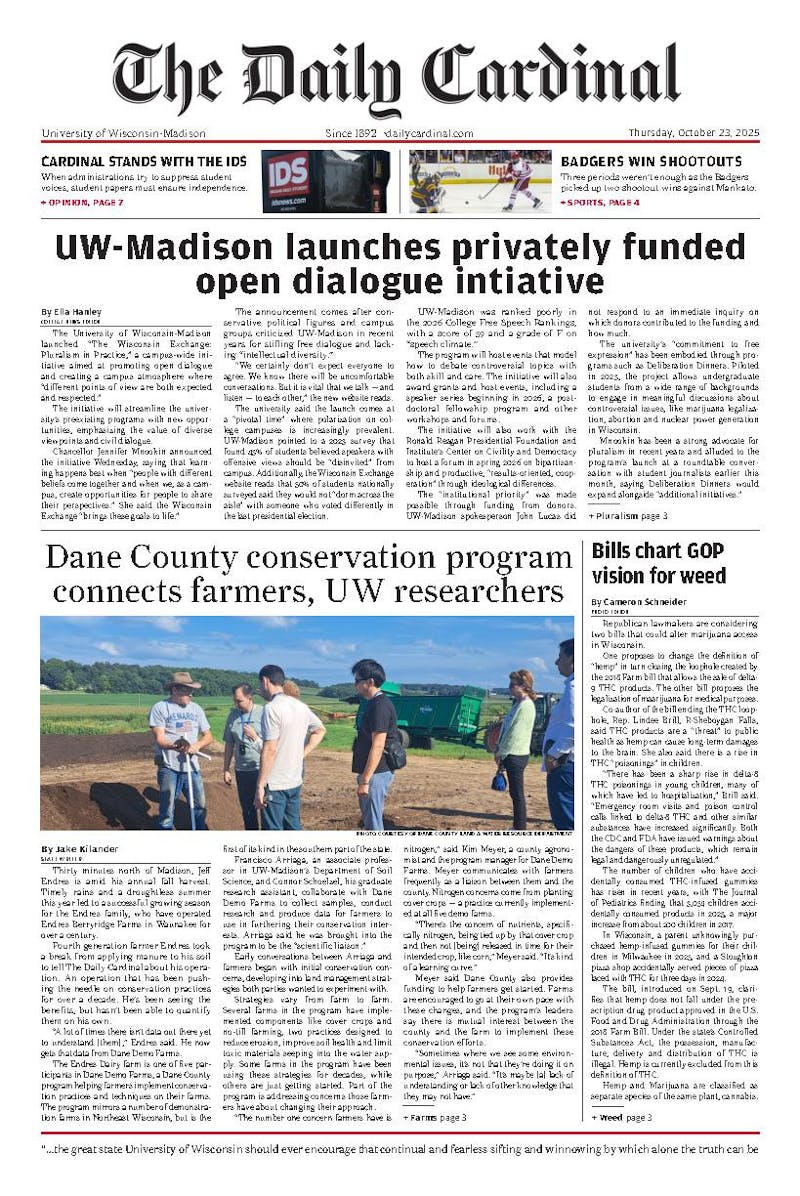Researches at UW-Madison have discovered a method to inhibit growth of viruses before or during an infection. This new strategy may inhibit the development of drug-resistant strains, thus solving a major obstacle for biochemical researchers.
John Yin, a UW-Madison associate professor of chemical and biological engineering, and Hwijin Kim, a graduate student in the department, coauthored a paper in the March issue of Antimicrobial Agents and Chemotherapy.
\Our calculations suggest this antiviral strategy is a very effective approach and one that is very difficult for a virus to overcome,"" Yin said in a press release. ""They essentially shut down virus growth while expending only a small fraction of the resources that the virus would normally use.""
Viruses reproduce by inserting their genetic material into host cells. After taking the cell captive, they literally take over its functions to produce viral proteins and genetic material. The virus later undergoes a phase where new viruses self-assemble, burst out of the host cell and attack other cells.
The current technique to stop viruses involves drugs that knock out key functions in the cell used by viruses for growth and reproduction. However, these drugs have not been successful in prohibiting viruses from producing drug-resistant strains.
The researchers created smaller, diversionary molecules that enter a cell and hijack the machinery the virus requires for growth. Due to their smaller size, the molecules can grow faster and thus steal more resources from the virus. Also, since they do not encode virus proteins, they are powerless inside the cell.
Using computer simulations of viral intracellular growth, the UW-Madison researchers found that when a parasitic molecule was absent, the virus produced more than 10,000 copies of itself in less than 20 minutes. When the new parasitic molecule was present, no new progeny of the virus existed. Plus, the diversionary molecules grew in number by more than 10,000-fold in 10 minutes.
""One of the foreseeable challenges I can think of is that it may be difficult to give an individual this particle and have it taken up by cells where the virus is going to infect,"" said Gary Splitter, UW-Madison professor of animal health and biomedical sciences.
Introduction into living cells is the next application for this strategy, although a potential drawback remains due to the negative effect this parasitic strategy may have on host cells.
""It is difficult to safely implement this into living cells,"" said Kim. ""We still have a long way to go.\





